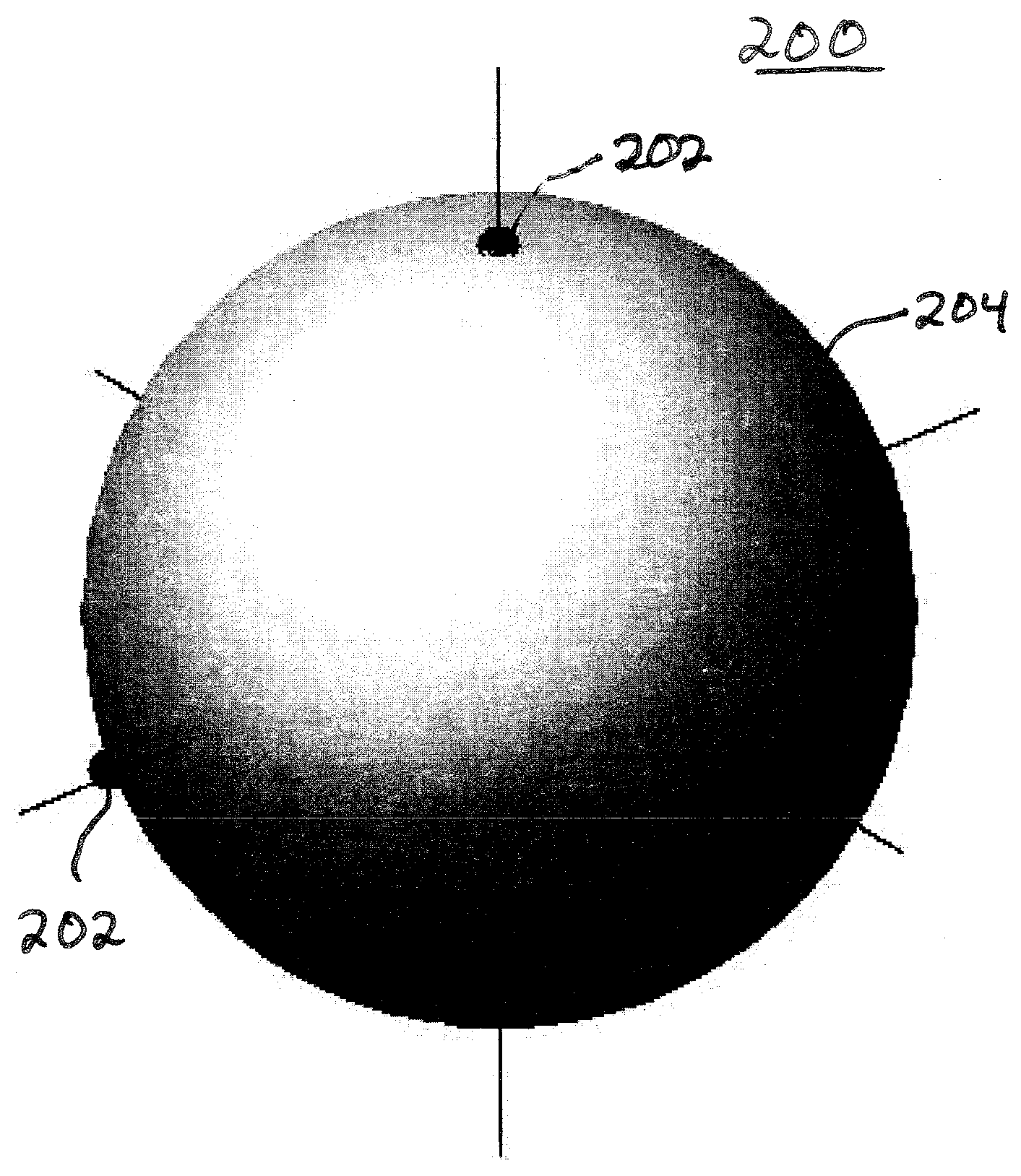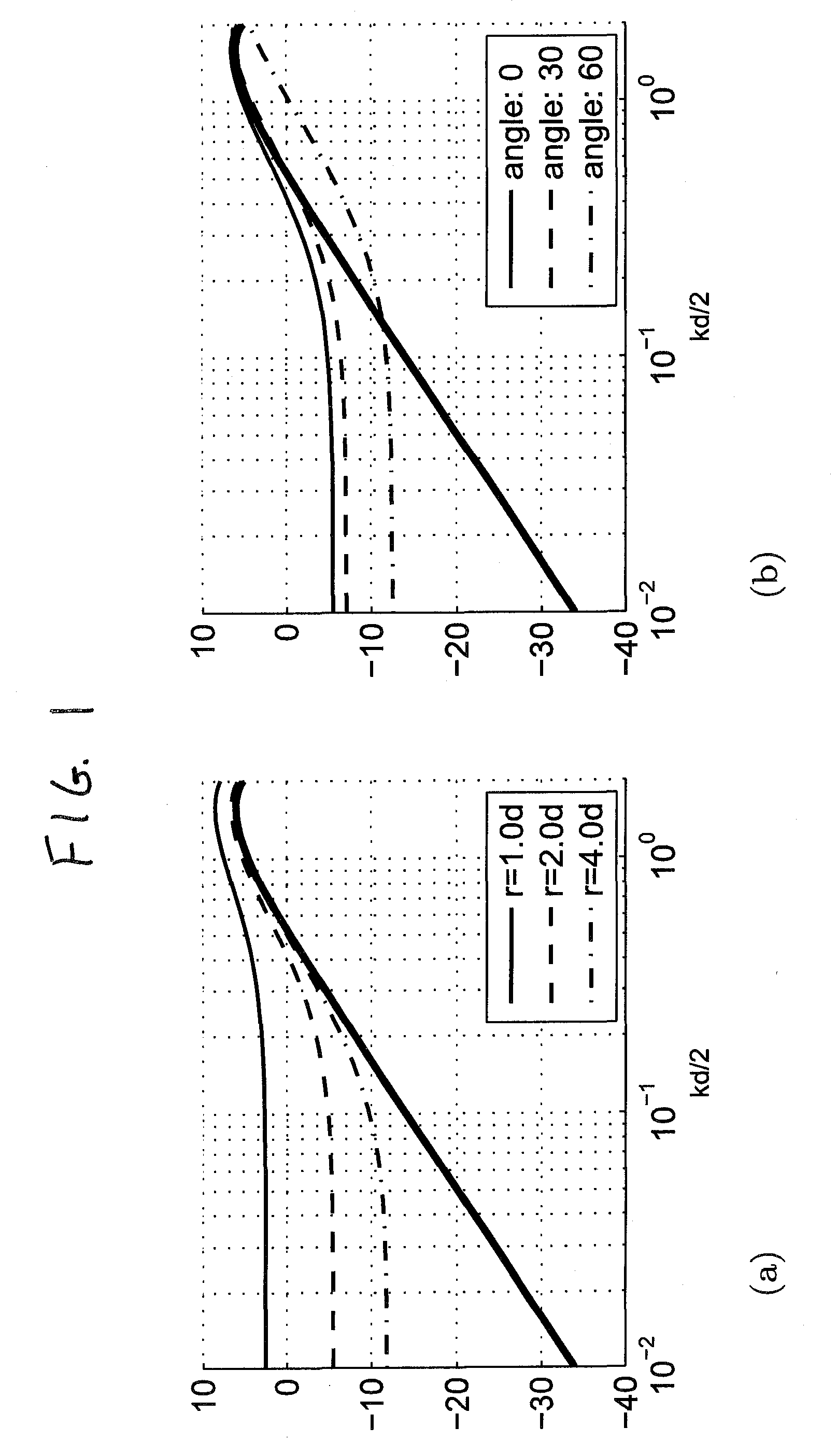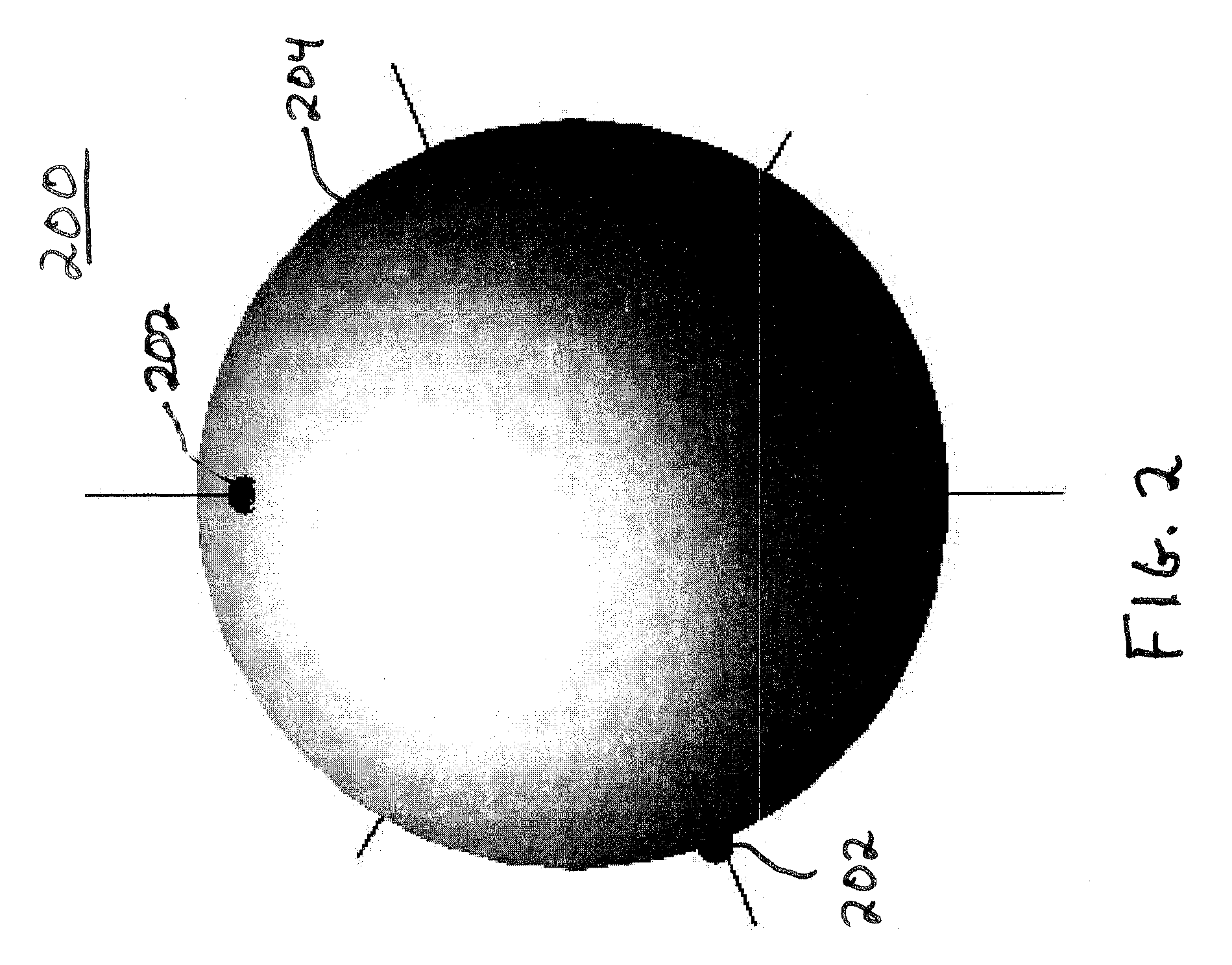Position-Independent Microphone System
a position-independent, microphone technology, applied in the field of acoustics, can solve the problems of not recovering the loss of attenuation of farfield sources, unable to achieve sufficient gain,
- Summary
- Abstract
- Description
- Claims
- Application Information
AI Technical Summary
Problems solved by technology
Method used
Image
Examples
Embodiment Construction
[0022]According to certain embodiments of the present invention, a microphone array consisting of a plurality of audio sensors (e.g., microphones) generates a plurality of (time-varying) audio signals, one from each audio sensor in the array. The audio signals are then decomposed (e.g., by a digital signal processor or an analog multiplication network) into a (time-varying) series expansion involving discretely sampled (e.g., spherical) harmonics, where each term in the series expansion corresponds to the (time-varying) coefficient for a different three-dimensional eigenbeam.
[0023]Note that the number and location of microphones in the array determine the order of the harmonic expansion, which in turn determines the number and types of eigenbeams in the decomposition. For example, as described in more detail below, an array having four appropriately located microphones supports a discrete first-order harmonic expansion involving one zero-order eigenbeam and three first-order eigenbe...
PUM
 Login to View More
Login to View More Abstract
Description
Claims
Application Information
 Login to View More
Login to View More - R&D
- Intellectual Property
- Life Sciences
- Materials
- Tech Scout
- Unparalleled Data Quality
- Higher Quality Content
- 60% Fewer Hallucinations
Browse by: Latest US Patents, China's latest patents, Technical Efficacy Thesaurus, Application Domain, Technology Topic, Popular Technical Reports.
© 2025 PatSnap. All rights reserved.Legal|Privacy policy|Modern Slavery Act Transparency Statement|Sitemap|About US| Contact US: help@patsnap.com



